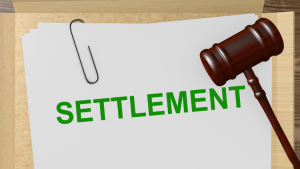
Collecting From Life Insurance Before Death
 If you are having trouble paying bills, there are ways to use your life insurance policy to help. Some require planning ahead, while others can only be used under certain conditions.
If you are having trouble paying bills, there are ways to use your life insurance policy to help. Some require planning ahead, while others can only be used under certain conditions.
- Whole life or universal life insurance policies have cash values that can be withdrawn or borrowed from if needed without affecting your coverage.
- Riders can be added to your policy to increase your benefits, waive premiums under certain circumstances, guarantee the ability to add additional insurance, and/or allow you to collect on death benefits under certain conditions while you are still alive.
- Your policy may have a cash surrender value, but you would no longer be covered.
- You can opt to sell your life insurance policy to a third party, which will usually be more than the cash surrender value.
- Any settlement that comes as cash is available to creditors.
Accelerated Death Benefits Rider
An accelerated death benefits rider (ADB) allows you to receive a certain percentage (but not all) of your policy’s value before your death if a terminal illness is diagnosed and verified by a physician. The rider may be called a living benefit or terminal illness rider.
This benefit is usually included in your policy. If offered to you at additional cost when you are buying your policy, you may need to consider the chances of using it. If not, you should still consider adding the rider to your policy when you purchase it.
If you do not add or have the rider when you purchase the policy, there are restrictions on when an ACB rider can be added.
- The life-expectancy requirements range from 3-24 months, most commonly between 6-12 months.
- If your life expectancy is longer you may still qualify if you:
- Are terminally ill;
- Have been diagnosed with a critical illness or terminal medical condition that will reduce your expected lifespan;
- Have a chronic illness that prevents you from carrying out normal daily activities;
- Have undergone or are scheduled to undergo an organ transplant; or
- Require long-term care in an assisted living facility or in-home medical care for help with bathing, dressing, eating, etc. This may include for conditions such as advanced Alzheimer’s Disease or severe cognitive impairment.
- If you add the rider after a terminal illness is diagnosed, the premiums will be much higher and you will likely need a medical exam.
 When you develop a terminal illness, adding an ADB rider may be preferable to a viatical or life settlement.
When you develop a terminal illness, adding an ADB rider may be preferable to a viatical or life settlement.
- The payout can be between 50-95% of your death benefit (typically about 80%) minus premium fees vs. 20-70% for viatical or life settlements.
- It is not subject to federal tax if your incapacitating chronic condition or terminal illness has been verified and you are expected to die within two years.
- Unlike a viatical or life settlement, the remainder of your death benefit goes to your family.
- Administration and service fees may be charged and state tax may be assessed if applicable in your state.
The funds can be used for anything to make your remaining life as comfortable and satisfying as possible.
- The ADB rider funds are usually paid out as needed rather than a lump sum.
- The most important use is to cover end-of-life expenses not covered by healthcare insurance and/or a long-term care policy. This end-of-life care could include medical treatments, hospice care, living in a nursing home, or hiring a private caretaker.
- Funds can be used for everyday costs or personal expenses that improve your level of comfort.
- Any remaining benefit can be used for a viatical settlement or to support your family after you have passed away.
Unlike viatical or life settlement, your premiums may continue. Depending on the details of your rider, this may be the full premium or a reduced amount based on the payout.
Chronic illness and critical-illness riders are similar to the ADB, but allow access to death benefits if either of these occur.
Cash Value
If you have a policy that accumulates cash value, you can use it for expenses. Cash value grows tax-deferred. Any cash up to the amount you’ve paid into cash value through premiums (your “basis”) can be taken out of a policy tax-free. Any amount above that (i.e. accumulated dividends/earnings) is taxable as income.
Although accumulated slowly, there are different ways you can use cash value if it will not be included in the death benefits. These options are usually determined when creating the policy.
Cash value can be the basis for a loan which is not taxable as income.
- Although it can seem like borrowing your own money, you are actually borrowing from the insurance company. The cash value is collateral for the loan.
- Unlike other types of loans, your credit score does not affect your ability to borrow from the cash value.
- It works like any loan and must be repaid with interest.
- Any unpaid loans will be deducted from the death benefits.
 Cash value can be withdrawn as you need it.
Cash value can be withdrawn as you need it.
- Many companies will deduct this amount from the death benefits, so be careful and ask about this before you agree to the policy.
- Consider only agreeing to a policy that decreases the cash value, not the death benefit. In many cases more money is deducted from the cash value than you receive. You may be able to negotiate for a more favorable percentage
- The goal is always to withdraw all the cash value before you die.
If you cannot withdraw cash value directly, you will still need a means to exhaust it. Cash value can be lost if not used, so don’t let it accumulate without a plan for it.
- The cash value could be used to pay a portion of the premium to decrease them. This is often referred to as being “paid up.”
- You could continually increase the death benefit by using all of the cash value to buy more insurance.
- You could buy additional life insurance or add riders.
- The cash value could be invested to provide a tax-free income or retirement fund for you, such as annuity. It usually takes 10-15 years to build up enough cash value to be useful. Variable universal life and variable life insurance policies are designated as annuities and the dividends are subject to income or capital gains tax.
- Some insurance companies will allow you to add a rider allowing your beneficiaries to receive the cash value, but you generally need to ask about it.
- A form of whole life insurance called a levelized death benefit policy automatically includes the cash value with the death benefit after your death.
Chronic Illness Rider
Some insurance companies offer a chronic illness rider which allows you to receive a certain percentage of your policy’s value before your death.
- Funds can be used to cover treatment or daily living expenses if you develop an illness or disability that prevents you from performing at least two of the six “Activities for Daily Living” (eating, bathing, getting dressed, toileting, transferring, and continence).
- A medical professional must certify that the disability is permanent.
Critical-illness Riders
 Critical-illness riders allow you to receive a certain percentage of your policy’s value before your death. Funds are to cover treatment for illnesses that will limit your life expectancy if not treated, typically within six months.
Critical-illness riders allow you to receive a certain percentage of your policy’s value before your death. Funds are to cover treatment for illnesses that will limit your life expectancy if not treated, typically within six months.
Conditions may include heart attack/failure, life-threatening cancer, stroke, kidney failure, ALS, coma or paralysis, and other critical conditions specified in the policy. The illness must be diagnosed and verified by a physician.
- Although critical, these illnesses do not have to be fatal to be covered.
- These conditions often result in high medical bills, so it may be a worthwhile addition to your main life insurance policy.
If you elect to add the rider, consider covering at least the illnesses you are at risk for based on family history, past exposures, and/or medical history.
The money for the payout is taken out of the death benefit and is paid out as a lump sum. When you die your beneficiaries will receive a death benefit, reduced by the amount taken out for medical care.
Long-term Care Rider
A long-term care rider allows you to receive a certain percentage of your policy’s death benefit before your death. Funds can be used to help pay for nursing home, assisted living, adult day care center, or in-home care when you require help due to an illness or disability that prevents you from performing at least two of the six activities for daily living listed above.
It is best to purchase the rider before you need it, but not so early that you pay more in premiums than you will get in benefits, usually in your mid 50s to mid 60s. The premiums will be prohibitively higher if you wait until you need long term care.
There are ordinarily two types of long-term care riders:
- Reimbursement riders that pay you back for what you spend out-of-pocket on long-term care expenses, up to your policy’s monthly limit; and
- Indemnity riders that pay out a predetermined monthly benefit, regardless of the actual long-term care expenses you have.
If your life insurance death benefit is low, your long-term care costs will likely exceed the value of the policy unless covered by your healthcare such as Medicare or Medicaid. Even if you have a large death benefit, these costs not paid by your health insurance could still exceed your benefit if they are extremely high. Although the premiums are much higher than a rider, in these cases you may be better off with a long-term care policy which will cover more long-term care expenses. Choosing between the two is difficult if you do not have knowledge of your expenses.
- For example, if you eventually don’t receive a lot of care you would have saved money by spending less on rider premiums vs the more expensive policy premiums.
- On the other hand, if you purchased a rider but had a lot of expenses, you could end up spending much more money on care vs if you had purchased a stand-alone policy.
- The rider can be complex so it is important to make sure you understand the rider, compare different options, and you know the conditions to qualify.
Life Settlements
 A life settlement involves selling a life insurance policy through a life settlement broker or a life settlement provider (a company that specializes in this) to an individual or company. In return for the payout, they pay the premiums and get the benefit after your death. The payout is considered taxable income and could make you ineligible for Medicaid and/or public assistance.
A life settlement involves selling a life insurance policy through a life settlement broker or a life settlement provider (a company that specializes in this) to an individual or company. In return for the payout, they pay the premiums and get the benefit after your death. The payout is considered taxable income and could make you ineligible for Medicaid and/or public assistance.
These settlements are typically only available with whole/permanent life insurance policies and if you are older and expected to live another five to 10 years, although you usually do not need to be sick to qualify.
The purchasing company is trying to make a profit and the settlements are small compared to the face value of the policy. A life settlement is rarely a good financial option for you and in most cases this should be a last resort.
Many companies will only buy policies if you are over 65-70 years old and the policy is worth at least $100,000 – $250,000.
The payout is determined by many factors such as life-expectancy, type and size of the life insurance policy, and the projected total premium costs.
- It averages 20-30% of the death benefit value (can rarely be up to 80%).
- It is usually more than the cash value, but the sale should not be done if it isn’t significantly more.
- For the most part the settlement is taxed as income, including capital gains tax if the cash value is more than the premiums paid, and may be available to creditors.
If considering this option, research brokers and buyers thoroughly and have them obtain offers from multiple companies/buyers to maximize the payout.
Surrendering Your Policy
You may be able to surrender your whole life or universal life policy to the insurance company and trade your death benefit for the current value of the account, minus surrender fees.
- Any amount up to what you’ve paid into cash value through premiums (your basis) can be taken out of a policy tax-free. Any amount above that (i.e. accumulated dividends/earnings) is taxable as income.
- There will be financial penalties if done during the surrender period. The surrender period is the amount of time you must wait until you can withdraw funds from your policy, typically the first 2-3 years. Some companies will not let you do this during this time while others will charge a significant penalty.
- Most companies reduce surrender fees over time after the surrender period. The reduction phase is typically 10 years, after which there are no fees.
It is the last option to consider if you need cash since it leaves you without life insurance for any future needs. While you may be able to purchase a new life insurance policy later, there will be higher premiums because you will be older and may have developed medical conditions that will further increase the premiums or even make you ineligible for most life insurance.
Viatical Settlements
 Viatical settlements are a form of life settlement that can be used with any type of life insurance policy, although the company would not be interested if you had a term life insurance policy that might expire without the ability to convert it into permanent insurance while you are alive.
Viatical settlements are a form of life settlement that can be used with any type of life insurance policy, although the company would not be interested if you had a term life insurance policy that might expire without the ability to convert it into permanent insurance while you are alive.
You must have had the policy for at least two to five years, depending on the laws in your state, and they are only available to you under three circumstances.
- You have a terminal illness and are expected to live less than two years.
- You have a chronic incapacitating illness defined as:
- An inability to perform at least two activities of daily living (eating, toileting, transferring, bathing, dressing, and continence) for at least 90 days due to the loss of functional capacity; or
- A need for substantial supervision to protect them from threats to health and safety due to severe cognitive impairment.
- You have a not-yet-terminal chronic condition, but have a financial need. You can seek a viatical settlement if:
- The money is to be used to pay for qualified long-term care that is not covered by medical insurance payments, including Medicare; and
- Payments by other sources would exceed $180 per day, indexed for inflation.
Qualification requires an attending physician to write a letter verifying the presence of a terminal illness or incapacitating chronic condition. The company can obtain medical records for an outside consult to contest this or to obtain an accurate prediction of the policyholder’s life expectancy.
If considering this option, thoroughly research viatical settlement companies, brokers, and buyers to be sure they are licensed or registered to legally buy your life insurance policy, if necessary in your state, as well as what the state’s requirements may be. Whether dealing directly with the company or going through a broker make sure you get offers from multiple companies/buyers to maximize the payout.
Like a life settlement, the viatical company will take over premium payments. Since your life expectancy is shorter for a viatical settlement, they will pay less in premiums and, therefore, the settlements are higher than other life settlements — typically 50-70% of the policy value. There may be few situations where it makes sense.
- You have no spouse or children who will be dependent on the death benefit AND the money will make a difference in the quality of your life, cover medical and long-term care costs, and/or there is nothing else to lose.
- If you can’t afford your insurance premiums and lapsing of the policy will result in no benefits AND there are no other financial options, such as:
- Selling the policy to a relative or retirement plan; or
- Paying the premium with an equity line or reverse mortgage on a home.
Aside from the pay out, there are many other things to consider.
- Viatical settlements usually only apply to policies with at least $100,000 in face value and have been held for at least 2 years.
- In order to assure a profit, the purchasing company adjusts payouts using an estimate of what it might cost to keep your policy active while you are alive.
- You will receive the cash value of any permanent life insurance policy.
- For the remainder of the payout they assess your life expectancy based upon your medical information and your physician’s prognosis of your health. In general, the longer you have to live the less you’ll be paid.
- If the premiums are too high or life expectancy too long to make a profit, the company will not buy the policy no matter the face value.
- Broker’s fees and commissions can be up to 30% of the payout.
- The additional income may result in you becoming ineligible for Medicaid or food stamps and making Social Security income taxable in the year the viatical payment is received.
- Your viatical settlements will not be subject to tax under certain conditions.
- You will not pay federal income tax if a licensed life settlement provider is used and you meet the life expectancy, disability, or chronic illness qualifications mentioned above.
- You will not pay state income tax if the licensed life settlement provider is licensed in your state and you meet your state’s definition of a terminal illness.
- Your provider abides by requirements agreed to in the Viatical Settlements Model Act (PDF).
- For further details, see Viatical Settlement [Overview and Guide].
- Each state determines the amount of time a policy needs to be owned before a viatical settlement can be pursued; this can be anywhere up to 5 years.
- Your beneficiaries will not receive any benefits upon death.
